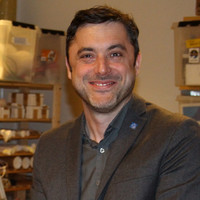“Black holes are such strange objects”

The announcement of the shared Nobel Prize in Physics was greeted with excitement at the KTH Physics Department, where experimental physicist Mark Pearce has been investigating X-ray emission from the vicinity of black holes.

“It’s a well-deserved prize,” Pearce says. “I like the combination of the theoretical work on black holes and then the experimental evidence that strongly supports their existence.”
With near Earth space missions stretching out over the last decade, Pearce has most recently studied black hole binaries , systems consisting of a star and black hole that orbit around each other.
There is a big difference, however, between the two classes of black holes. “The Nobel Prize concerns supermassive black holes such as the one in our galaxy which is some 4 million solar masses,” Pearce says. The black hole in the Cygnus X-1 system that he and his colleagues have been investigating lately is about 15 solar masses (a single solar mass equals about 333,000 Earths).
While his projects have only a tangential relationship to supermassive black hole studies, both subjects present mysteries as impenetrable as the space-time singularity at their core.
For Pearce, the focus of research has been on the X rays emitted by binaries due to the intense heat generated as the black hole rips matter away from its celestial dance partner. The matter accumulates in a swirling disc, where friction generates radiation.

Pearce and his team have started to observe the polarisation of these rays, that is, the direction in which an electromagnetic wave oscillates with respect to its trajectory. “That’s a quantity which is not normally measured, and this new information tells us something about the geometry of the black hole environment,” he says.
So far Pearce and his team have found evidence that would seem to support one proposed model of the structure of the hot ionized gas of particles that appears around the black hole forming a corona.
“We found it’s a spatially extended structure rather than a compact one,” he says, but with more precise data from upcoming missions he expects to take the next steps forward in settling the question.
“It’s curiosity-driven research but, of course, history tells us that such basic research will lay the foundation for future technological advances,” he says. “And we need to keep probing the universe and understand how it works on a fundamental level, that’s an important job and other smart people will of course think up the applications and utilize this knowledge.”
For this reason, black holes offer endlessly powerful subjects for inquiry.
“They’re such strange objects,” he says. “They are so dense that no light can escape, and the physical processes that are going on cannot be replicated on Earth.”
David Callahan

